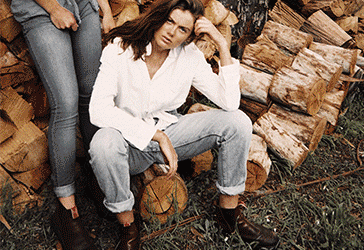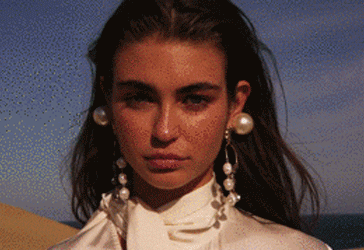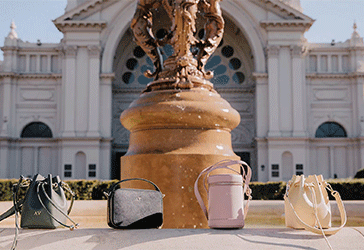When it comes to Men’s Fashion At The Races, the journey to the podium is not always as smooth as Justin Timberlake’s ‘suit & tie’. Case in point, the double-breasted suit with an 80’s twist, which made its winning mark two seasons ago. Now that was no off-the-rack fluke, oh no. When it comes to putting your best foot forward at the races, the common belief that men have it easier than women has never been farther from the truth. With less opportunity to push the boundaries without ending on the wrong side of a fashion review, when it comes to men’s fashion, the devil is in the detail. And like all good stories, it starts with a solid base. Not wanting you to crumble under the pressure, we’re here to help you understand the basics of building the perfect suit.
Well, not us personally. We thought someone more suitable such as the man who has built one of the nations most recognisable fashion labels was more fit for the job. That man would be M.J. Bale founder and the impeccably dressed, Matt Jensen.
Helping guide you down the road to fashion greatness, Jensen is here to offer advice on everything from picking the right suit colour to matching it with the right shoe (and all the trimmings in between). And if a winning look is not on your agenda, having a crisp, well-fitted suit for all occasions hanging in your wardrobe should be.
Let’s start with the suit. For a classic colour you can’t go past...
Classic colours depend on the season. Heading into autumn, it would be shades such as charcoal and navy. The benefit is that you can dress these colours up with a sharp shirt and bold tie, or get creative and split the suits, wearing the jacket of one suit with the trousers of the other suit, and vice versa.
Black is a colour you wouldn’t normally associate with daytime suiting unless its event-specific, such as monochromatic-themed Derby Day (even then we would suggest charcoal or grey) or Black Tie.
For spring racing, classic colours would be softer: think greys, creams and blues. The lighter colours also absorb less heat and you’ll feel fresher.
But if you prefer a little personality then...
Bring out your personality with patterns and textures. You can’t go wrong with windowpane and Prince of Wales checks. Pinstripes tend to be very business, so unless it’s an elegantly brushed chalk stripe, stick to the checks.
Textures in the weave of a suit/jacket give you a slight variation without being overtly bold. Brushed and felted wool will also keep you warm if the weather turns.
For a suit that will live in your wardrobe forever invest in quality material. The composition should go a little like...
Woollen suit fabric is graded by microns. The lower the micron grading (e.g. Super 100s) the stronger and more resilient the fabric. The higher the grading (e.g. Super 150s) the softer and more luxurious the fabric. Therefore, if you are only occasionally wearing a suit, woven from higher microns would be ideal. If it’s a suit you plan to wear more than once or twice a week head for something a bit more durable.
Now let’s get down to the tailoring and the perfect fit...
It is almost impossible to fit a suit perfectly off-the-rack. We all have different body shapes. Therefore, most suits suit require alterations to fit your body perfectly. The main thing is that the fabric shoulders sit flush and don’t bulge out the sides of your suit. Make sure that the body isn’t too tight, or else it will create stretch lines around the button when fastened. Trouser hems should be taken up. As it is autumn don’t let your ankles freeze. Make sure the hem sits flush to the shoe with only a slight break in the crease if any.
To match with a perfect shirt...
You can‘t go wrong with a crisp white shirt. This will open up your opportunity to wear a statement tie and pocket square. Usually, the base colours of the jackets, suits, or trousers will determine what accent colours will work best for your shirt, tie, and pocket square.
An accent colour should be used sparingly as they are usually brighter colours that pull your focus on an outfit. In most cases, they shouldn‘t be used with any other accent colours. When this is successfully achieved, it tends to lift an outfit without overpowering the entire look.
If you are looking for something a little more daring opt for...
Bold striped or check shirts will elevate your outfit and give you that point of difference. Steer clear of shorts with ‘banker stripes’ (thin vertical stripes) and white collars. These are associated with business attire. Don’t wear a black or dark shirt.
Now that we have the base, let’s add personality.
For a race-worthy tie look for...
Your shirt, tie and pocket square should simply pay tribute to your suit. They don’t all have to match but they should complement each other. If you don’t want a bold coloured tie, lean towards textured or patterned ties. This will add a new dimension to your outfit. Steer clear of novelty ties.
Don’t forget these accessories...
Most race days have a dedicated flower. Flowers should be worn on the left lapel of a jacket, pinned about a third of the way down the lapel. If a flower isn’t your thing, a simple boutonnière (button hole pin) will elevate your look.
Finish with the right shoes...
If you are stuck on which colour of shoes you should wear, simply look at the buttons on your suit. If your suit has brown or tortoiseshell-coloured buttons go for a brown shoe, possibly a brown brogue or classic toe cap shoe. If your suit has a navy or black button go for a black shoe, possibly a black classic toe cap shoe or loafer. If in doubt wear a dark sock to match your shoes. If you’re feeling bold wear a coloured sock to make your accent colour used in your outfit. Your belt must match your shoes!





